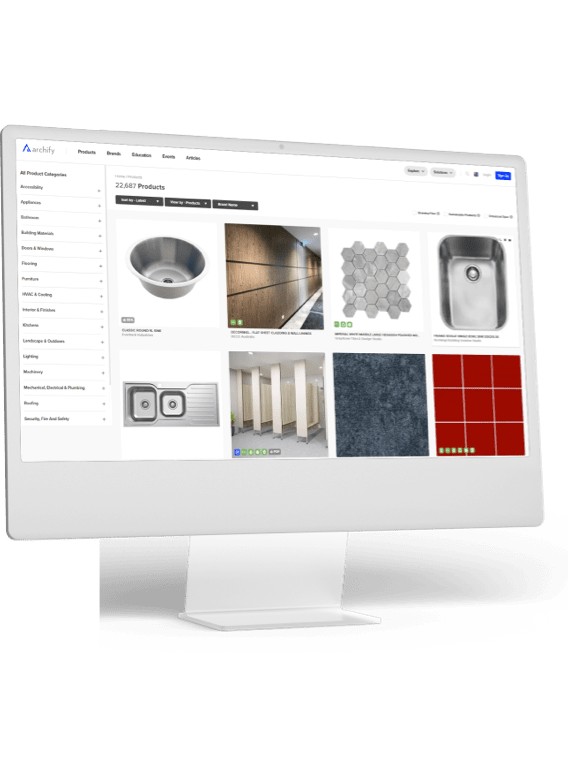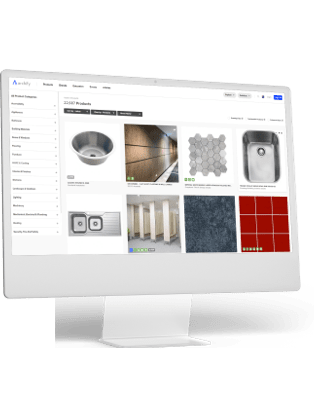The stringent code requirements of Florida and other coastal regions require that the building envelope be maintained during a hurricane. All elements of the building shell must resist the effects of windborne debris as well as sustained turbulent winds lasting several hours. Extensive research, following Hurricane Andrew in 1992, showed that a breech of the envelope led to internal pressurization of the building. This effectively doubled the forces on major structural elements such as walls and roofs, leading to catastrophic failure. Oldcastle BuildingEnvelope® offers hurricane-resistant products that answer these problems.
StormGlass™
In independent testing, StormGlass™ met test requirements for large glass sizes up to 50 square feet. That means the freedom to design larger glazed openings while meeting the most stringent building codes for hurricane resistance. StormGlass™ has even been tested in four-sided structural glazed.
Capabilities
Oldcastle BuildingEnvelope® supplies all the main types of laminated glass used for hurricane-resistant applications. See our Product Performance chart. Usually, the laminate is made up of two pieces of glass of the same thickness; however, the two pieces of glass may be annealed, heat-strengthened or tempered, depending on the system in which it was tested.
Characteristics
• Meets the requirements for large missile and cyclic wind load
• Tested at sizes up to 50 sq. ft. and design pressures in excess of 100 psf
• Rigid interlayer providing low deflection under cycling test
• High adhesion between glass and interlayer
• Meets: TAS 201, TAS 202, TAS 203, ASTM E1886 and ASTM E1996
Description
The latest national standard is the ASTM E1996 Standard Specification for Performance of Exterior Windows, Curtain Walls, Doors and Impact Protective Systems Impacted by Windborne Debris in Hurricanes. It defines several missiles applicable to different wind zones, building types and building heights, while incorporating the requirements of southern Florida. ASTM charts show the requirements of ASTM E1996, with the southern Florida counties of Broward and Miami Dade being in Wind Zone 4. Testing is carried out on the system which includes glass, frame, sealants and hardware.
Technology
Our advanced interlayer technology is the thinnest of its kind in the hurricane-impact glazing market. StormGlass™ also features very high elastic modulus together with improved adhesion to glass. The benefits? StormGlass™ is one of the best performing and reliable products available. What's more, StormGlass™ affords the highest levels of protection, without compromising the optical quality of the glass.
- Laminated glass with .060 PVB
The stringent code requirements of Florida and other coastal regions require that the building envelope be maintained during a hurricane. All elements of the building shell must resist the effects of windborne debris as well as sustained turbulent winds lasting several hours. Extensive research, following Hurricane Andrew in 1992, showed that a breech of the envelope led to internal pressurization of the building. This effectively doubled the forces on major structural elements such as walls and roofs, leading to catastrophic failure. Oldcastle BuildingEnvelope® offers hurricane-resistant products that answer these problems.
StormGlass™
In independent testing, StormGlass™ met test requirements for large glass sizes up to 50 square feet. That means the freedom to design larger glazed openings while meeting the most stringent building codes for hurricane resistance. StormGlass™ has even been tested in four-sided structural glazed.
Capabilities
Oldcastle BuildingEnvelope® supplies all the main types of laminated glass used for hurricane-resistant applications. See our Product Performance chart. Usually, the laminate is made up of two pieces of glass of the same thickness; however, the two pieces of glass may be annealed, heat-strengthened or tempered, depending on the system in which it was tested.
Characteristics
• Meets the requirements for large missile and cyclic wind load
• Tested at sizes up to 50 sq. ft. and design pressures in excess of 100 psf
• Rigid interlayer providing low deflection under cycling test
• High adhesion between glass and interlayer
• Meets: TAS 201, TAS 202, TAS 203, ASTM E1886 and ASTM E1996
Description
The latest national standard is the ASTM E1996 Standard Specification for Performance of Exterior Windows, Curtain Walls, Doors and Impact Protective Systems Impacted by Windborne Debris in Hurricanes. It defines several missiles applicable to different wind zones, building types and building heights, while incorporating the requirements of southern Florida. ASTM charts show the requirements of ASTM E1996, with the southern Florida counties of Broward and Miami Dade being in Wind Zone 4. Testing is carried out on the system which includes glass, frame, sealants and hardware.
Technology
Our advanced interlayer technology is the thinnest of its kind in the hurricane-impact glazing market. StormGlass™ also features very high elastic modulus together with improved adhesion to glass. The benefits? StormGlass™ is one of the best performing and reliable products available. What's more, StormGlass™ affords the highest levels of protection, without compromising the optical quality of the glass.
- Laminated glass with .060 PVB
The stringent code requirements of Florida and other coastal regions require that the building envelope be maintained during a hurricane. All elements of the building shell must resist the effects of windborne debris as well as sustained turbulent winds lasting several hours. Extensive research, following Hurricane Andrew in 1992, showed that a breech of the envelope led to internal pressurization of the building. This effectively doubled the forces on major structural elements such as walls and roofs, leading to catastrophic failure. Oldcastle BuildingEnvelope® offers hurricane-resistant products that answer these problems.
StormGlass™
In independent testing, StormGlass™ met test requirements for large glass sizes up to 50 square feet. That means the freedom to design larger glazed openings while meeting the most stringent building codes for hurricane resistance. StormGlass™ has even been tested in four-sided structural glazed.
Capabilities
Oldcastle BuildingEnvelope® supplies all the main types of laminated glass used for hurricane-resistant applications. See our Product Performance chart. Usually, the laminate is made up of two pieces of glass of the same thickness; however, the two pieces of glass may be annealed, heat-strengthened or tempered, depending on the system in which it was tested.
Characteristics
• Meets the requirements for large missile and cyclic wind load
• Tested at sizes up to 50 sq. ft. and design pressures in excess of 100 psf
• Rigid interlayer providing low deflection under cycling test
• High adhesion between glass and interlayer
• Meets: TAS 201, TAS 202, TAS 203, ASTM E1886 and ASTM E1996
Description
The latest national standard is the ASTM E1996 Standard Specification for Performance of Exterior Windows, Curtain Walls, Doors and Impact Protective Systems Impacted by Windborne Debris in Hurricanes. It defines several missiles applicable to different wind zones, building types and building heights, while incorporating the requirements of southern Florida. ASTM charts show the requirements of ASTM E1996, with the southern Florida counties of Broward and Miami Dade being in Wind Zone 4. Testing is carried out on the system which includes glass, frame, sealants and hardware.
Technology
Our advanced interlayer technology is the thinnest of its kind in the hurricane-impact glazing market. StormGlass™ also features very high elastic modulus together with improved adhesion to glass. The benefits? StormGlass™ is one of the best performing and reliable products available. What's more, StormGlass™ affords the highest levels of protection, without compromising the optical quality of the glass.
- Laminated glass with .060 PVB
United States










